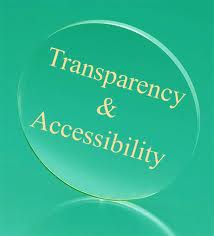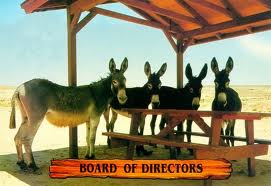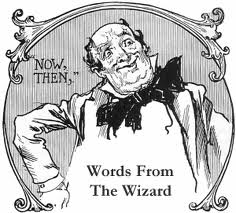 For the last two days, I have blogged about the impact of government funding on non-profit organizations’ fundraising programs. All of this talk about Uncle Sam and the non-profit sector got me thinking about government funding and the for-profit sector (e.g. bank bailouts, farm subsidies, Occupy Wall Street, etc). So, it wasn’t a big leap in my head when I jumped from for-profit corporations taking public funds to limiting CEO compensation and then back to how this all relates to compensation of non-profit CEOs who accept public funds.
For the last two days, I have blogged about the impact of government funding on non-profit organizations’ fundraising programs. All of this talk about Uncle Sam and the non-profit sector got me thinking about government funding and the for-profit sector (e.g. bank bailouts, farm subsidies, Occupy Wall Street, etc). So, it wasn’t a big leap in my head when I jumped from for-profit corporations taking public funds to limiting CEO compensation and then back to how this all relates to compensation of non-profit CEOs who accept public funds.
LOL … yes, my mind has been wandering a lot lately. I blame the sugar rush from Halloween. 😉
You only need to go back a few years in the news cycle to recall that segments of the public were incensed by the federal government’s TARP program, which was our country’s bank re-liquidation and bailout program. Part of that public debate (and it is being rehashed by the Occupy Wall Street protesters) is that for-profit corporations that accept public funds subject themselves to a different level of accountability and regulation by “We The People”.
Well, if you buy into this argument, then don’t you need to logically do the same for non-profit organizations who accept government funding?
 While the IRS is currently charged with monitoring 501(c)(3) non-profit organizations’ executive compensation to ensure it is in line with similar size agencies in similar sized communities through a provision called the “private inurement rule,” the question I pose goes a little bit further. The aforementioned question asks if local city councils, state legislatures and Congress can or should legislate concrete rules around non-profit executive compensation for those who accept public funding. For example, if “non-profit agency X” accepts a grant from their local city council, then that board of directors of “non-profit agency X” agrees to abide by a local ordinance that defines what the city council sees as reasonable and acceptable compensation.
While the IRS is currently charged with monitoring 501(c)(3) non-profit organizations’ executive compensation to ensure it is in line with similar size agencies in similar sized communities through a provision called the “private inurement rule,” the question I pose goes a little bit further. The aforementioned question asks if local city councils, state legislatures and Congress can or should legislate concrete rules around non-profit executive compensation for those who accept public funding. For example, if “non-profit agency X” accepts a grant from their local city council, then that board of directors of “non-profit agency X” agrees to abide by a local ordinance that defines what the city council sees as reasonable and acceptable compensation.
This debate was well frame by two individuals who I saw commenting on a Charity Navigator blog post.
Here is how one side of the coin sounds:
“I would suggest that we put some of these salaries in context (just as you did with the American Red Cross). Some of these CEO’s are managing organizations that are multi-million dollar “businesses.” As such, their salary compensation is reflective of the size of the organization’s revenue and project stream.”
Here is how the other side of the coin sounds:
“Comparing these salaries to “for-profit” salaries is just ridiculous. These organizations exist out of the goodness of the people who contribute. We give under the impression that we are Helping others….NOT Helping CEOs to get rich.”
 Of course, neither of these points-of-view deal with the issue of what to do with non-profit organizations who accept public sector funding like the for-profit banking sector did when they accepted TARP funds.
Of course, neither of these points-of-view deal with the issue of what to do with non-profit organizations who accept public sector funding like the for-profit banking sector did when they accepted TARP funds.
So, here is the deal . . . I sometimes write blog posts with a very specific point of view. Other times I’ll approach a subject without any idea of what my opinion is and organically let things unwind. I am approaching this subject with a very open-mind, and I’ll use tomorrow’s and Friday’s blog posts to focus on this subject.
What this means is that I would like a spirited discussion among the readership of this blog. Please use the comment box below to weigh-in with your thoughts. You are even encouraged to post questions if you’re as undecided as I am.
If you want to read more on non-profit compensation best practices, our friends at “Nonprofit Law Blog” did an outstanding job with their posts titled: “Compensation Strategies and Best Practices for Non-Profit Organizations” . . . click here for Part One and here for Part Two.
How does your agency currently ensure that its compensation is in-line with community standards and in compliance with IRS rules? Does the acceptance of public funding “change the math” in your head when you look at this issue? Do you see similarities or differences between the comparisons I draw between for-profit corporations accepting public funds and non-profit organizations doing the same? What role does the donor play in all of this? Should donors expect total transparency for the non-profit organizations they support?
Please take a few moments to weigh-in using the comment box below. It will only take a minute or two out of your day, and doing so will enrich the discussion tomorrow and Friday. Besides, as I always say, we can all learn from each other.
Here is to your health!
Erik Anderson
Founder & President, The Healthy Non-Profit LLC
www.thehealthynonprofit.com
erik@thehealthynonprofit.com
http://twitter.com/#!/eanderson847
http://www.facebook.com/eanderson847|
http://www.linkedin.com/in/erikanderson847


















